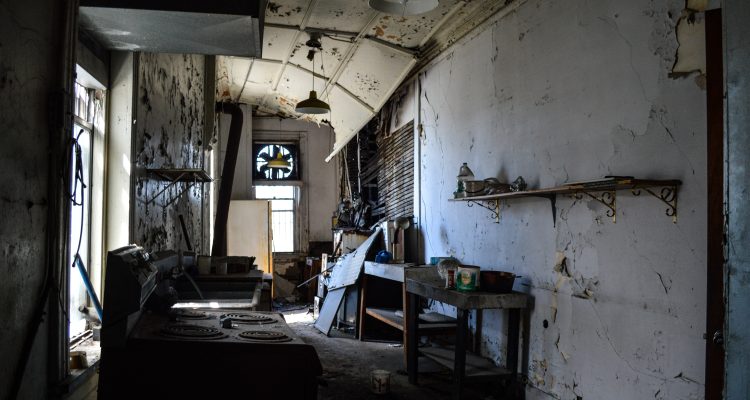Can growth spread?
The economic development specialist for the city of Wheeling believes it can, and after more than five years as the manager of Centre Market, Kurt Zende insists what has taken place inside the two market houses and beyond can and will take place in the city’s downtown area. Improved organization, beautification, marketing, a lot of hard work, and the private sector, he explained, are what allowed the historic district to attract a sold-out crowd of commerce to the two-block commercial and residential area.
“And it’s going to move north to Main and Market streets,” said Zende, who also serves as the city’s economic specialist. “I believe that because the people I have spoken with have recognized the fact that a critical mass is now present in our downtown area, and when that happens, other businesses follow. That’s basic economics, really, and developers in this area, and developers from outside the area, have recognized that fact, and that is why my phone rings so often. It’s really been a very enjoyable experience for me.
“We also know we can do in the downtown what we have achieved at Centre Market. We know what worked, we know what didn’t work, and Centre Market continues to improve,” he said. “That’s why I believe the future development of the downtown will be just as successful as the process continues this year and down the road from here.”
But it’s not yet over. Most recently, Zende orchestrated the implementation of WIFI within the market houses that are now surrounded by new sidewalks, and the artistic parking meters were saved and returned to new posts. The holiday shopping season, the 13-year city executive reported, was very successful and without a single complaint.
“It was a great shopping season for every business here, and that’s why we are 100 percent occupied in the Centre Market district right now,” Zende explained. “The owner of the Centre Market Bakery did decide to close after the holidays because she decided she was ready to retire, but that space will be filled in the very near future, pending council approval.
“The new business will also fill the space where Room for Change was located, too, and I believe people will really enjoy it once it’s in operation. All I can say right now is that it is a retail operation,” he continued. “And, right now, we have a pretty long waiting list of business owners who wish to locate either in one of the market houses or in a building in Centre Market.”
Replacing the roofs, Zende confirmed, is a project in process in partnership with Wheeling Heritage to discover what state and federal grants may apply to the preservation initiative; the restrooms are set for complete renovations, and he hopes televisions soon will be hung for patrons in the months to come.
“And we’ll see similar things take place between 10th and 16th streets, too,” Zende predicted. “It’s already happened in some areas, and we’ll see more. I know we’ll see more private-sector development in the downtown.”
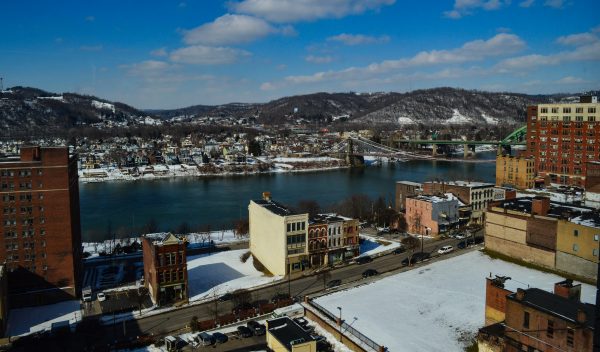
OK, So What?!
The wish list has long been long when it comes to what once was and what isn’t today, and that is proved daily on the ultra-popular “Memories of Wheeling” Facebook page.
Remember the Hamburger Inn with booth-side juke boxes? The Tea Room? The Dinner Bell? Murphy’s lunch counter?
The most popular suggestions through the years involved eateries, and during the past 15 years residents of the Upper Ohio Valley have been introduced to restaurants such as Applebee’s, Quaker Steak & Lube, Steak n’ Shake, Cheddar’s, and Chipotle. Those kinds of chain locations, though, are not what Zende is hearing when entertaining phone calls with potential investors.
Instead? Ethnic, including Indian and Mexican. Maybe a food court setting, too, as well as small-scale retail.
“This is probably the most excited I have been since I moved to Wheeling in 1995, and that’s because of the potential I see in the downtown,” Zende admitted. “I have been speaking with at least eight different individuals who have interest in opening eateries in the downtown area, and all of them have the financial means to make their projects happen.
“I receive phone calls every day, and I have conversations with 10 or 12 people each week who are interested in commercial space. Now, they all don’t work out, but some have, and I believe more will in the near future,” he said. “They see it. They see the growth in the market. Now, the city has set it all up to the best of our abilities, but we still need the private sector to come in and do the development.”
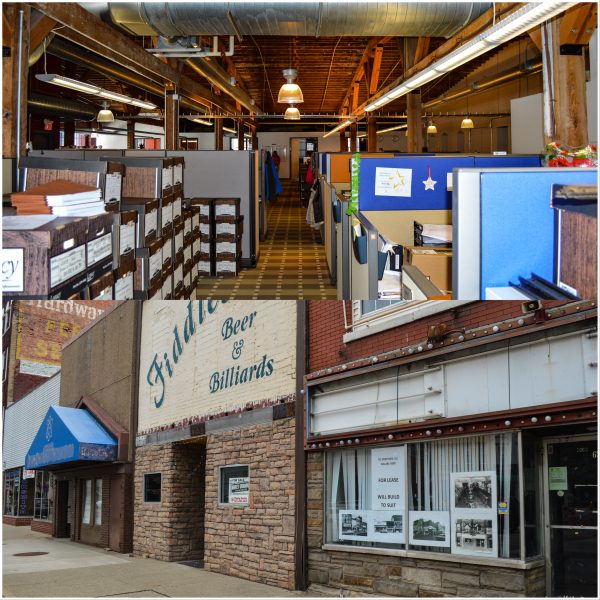
But why now?
While the number of employees in an area is an important statistic to private sector entrepreneurs, so is the residential population. In Centre Market, several above-business apartments have been occupied for decades, but the number of residential units has increased the past five years, and more soon will be added above Vocelli’s Pizza.
A critical mass is in place.
The same is taking place in the downtown area after The Woda Group added one- and two-bedroom loft apartments in the Stone Center and the Boury Lofts to add to the tenants living in the four high-rise apartment complexes in or close to the downtown.
“There are a lot of people who have grown used to living in an urban environment, so when they move to the Wheeling area, many folks wish to continue living in that atmosphere,” Zende explained. “A place like the Boury Lofts is right up their alley, too, because of the amenities offered inside the building and because of the business that we do have now in the downtown area. And I expect that number to grow in the future, too.
“I know some things are going to take place with the HRC Building that once was Sears, and with the building where Subway was once located, but I am not completely sure what those projects entail,” he said. “The former Kaufman’s building has been shown a bunch of times in the last six months, and I have also received interest about the Absure Tower on the corner 12th and Main streets. That building, I believe, would be a great location for residential.”
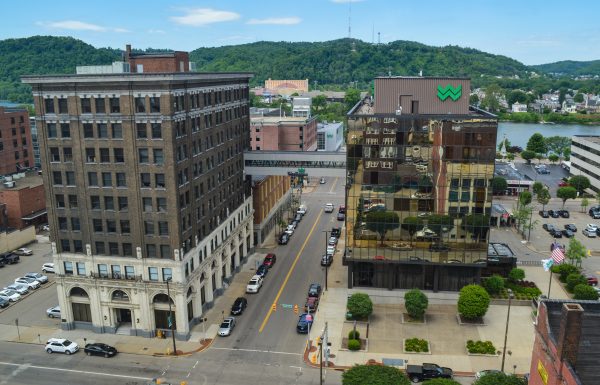
Where and When?
While every building along Chapline Street houses federal, city, and county government, churches, law firms, and non-profit organizations, Main and Market streets contain vacant buildings, six of which are owned by the city of Wheeling, and blank lots.
Along Main Street, the structure that was home to Kaufman’s and the former West Virginia Business College are empty, as is nearby 1056 Main Street. The buildings at 1107 and 1109 Main Street were once marked for demolition, but Mayor Glenn Elliott is dedicated to saving the structures and city officials have been entertaining potential developers for more than a year without an official announcement.
“Right now, there are three or four very interested parties in the Main Street buildings, and based on what I know, no matter which one of them comes through with the development, the people in this area will be very pleased with what opens,” Zende said. “I am positive the people with the Health Plan will be very pleased, as well.
“There really are some great concepts so it’s just a matter of City Council and our city manager selecting the one that makes the most sense to them,” he said. “I know those buildings are in need of new roofs, and those funds have been appropriated.”
As far as re-development is concerned, Market Street provides big challenges with privately owned vacant buildings like Chase Bank, the Schmulbach Building, where Wheeling-Pittsburgh was located, the former homes of both Posin’s and King’s jewelry stores, and the four buildings within the 1400 block owned by the city. All the above would involve significant, expensive renovations to re-invent the spaces, and even Zende said he’s received far fewer inquires about the government-owned structures.
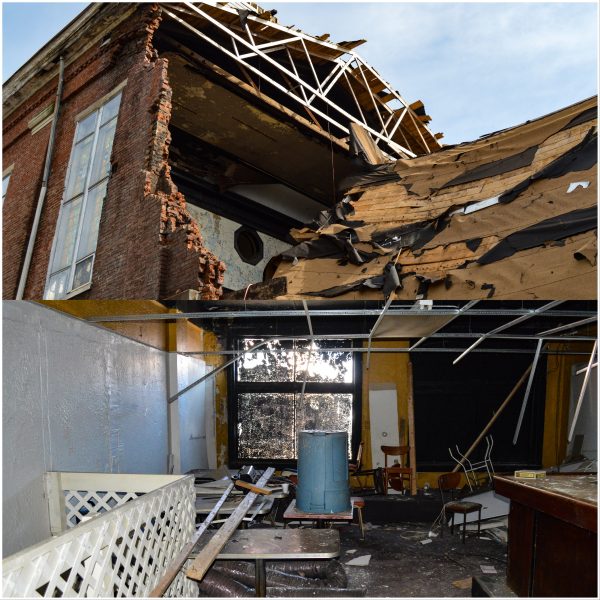
“I cannot say that there is as much interest that’s been expressed about the four buildings the city owns on Market Street, but I can tell you that interest has been expressed,” the father of five reported. “There is nothing really definitive, but I believe it is a good sign that I have received some phone calls about them from people who are kicking the tires, so to speak.
“I received one phone call from a gentleman who is from New York, and he seems pretty interested. I suspect that once the weather breaks, he may make a trip here to take a look for himself,” he continued. “When he called, he didn’t have a specific idea and instead asked my opinion as far as the needs in the downtown. He’s just looking at an opportunity because opportunity does exist again in our downtown because of the critical mass that is now present.”
With a private-public partnership with the state Division of Highways set to take place once all underground infrastructure work is completed in the downtown, paved streets, new sidewalks and access ramps, and trees are expected to redefine the Friendly City’s most populated business district.
“People like to do their business in pleasant atmospheres as often as possible That’s what we have heard at Centre Market, so the aesthetic improvements that will be made with the streetscaping project are going to be huge as far as the appearance and atmosphere,” Zende insisted. “I know the process may not be too pretty for a bit, but when it’s completed, I believe our downtown will look a lot different and a lot better than it does today.
“Once that takes place and it’s all done, I’m sure my phone will be getting charged even more than it already is.”
(Photos by Steve Novotney; the cover photo is the interior of the former Tom’s Pizza on Main Street, a structure that currently is being renovated into both commercial and residential spaces.)


